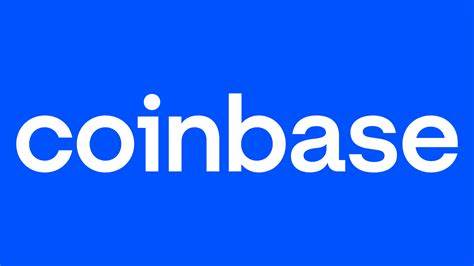The Age of Anger: Why Society Is So Mad — and How We Can Heal
A Boiling Point: Living in the Age of Outrage
Everywhere you look, people seem angry.
Drivers honk louder, online debates explode faster, politicians shout harder, and families argue more often over dinner tables or text threads.
We live in an era where outrage has become the default tone of public life — an emotional currency in the digital economy.
But beneath the noise and vitriol lies something deeper: a collective emotional crisis that’s been brewing for decades.
We are, in many ways, living in the Age of Anger.
The Rising Tide: Why Everyone’s So Angry
Anger has always been part of the human condition — a biological signal that something is wrong.
But today’s anger feels different: persistent, amplified, and contagious.
1. Stress and Overload
The average person is drowning in stimuli.
Economic insecurity, political instability, job stress, and information overload activate the brain’s amygdala — the region responsible for the fight-or-flight response.
Cortisol spikes, heart rates rise, and we become more reactive — less thoughtful, less patient, more defensive.
When stress becomes chronic, anger becomes habitual.
2. The Outrage Economy
Social media runs on engagement, and nothing drives clicks like conflict.
Algorithms amplify outrage because outrage keeps people scrolling.
The more we’re exposed to provocative content, the more emotionally polarized we become.
In this system, anger isn’t just an emotion — it’s a product.
We’ve built digital environments that reward emotional extremes. As a result, measured debate is drowned out by moral grandstanding and mob dynamics.
3. Loss of Connection and Trust
Isolation fuels anger.
When people feel unseen, unheard, or powerless, frustration turns into aggression.
The decline in community spaces, meaningful conversation, and shared purpose has left many people simmering beneath the surface.
Loneliness — especially among younger generations — correlates strongly with irritability and emotional volatility.
4. Trauma and Inequality
Behind much anger lies pain.
Unresolved trauma, social injustice, economic disparity, and discrimination breed resentment.
In many cases, anger is a secondary emotion — a shield protecting deeper wounds of fear, grief, or shame.
The Collective Psyche: A World on Edge
Historically, societies have always gone through emotional cycles.
The late 18th century had revolutionary fervor. The 1960s burned with protest and transformation.
But what’s unique about today is the scale and speed at which anger travels.
A single tweet can spark global fury.
A viral video can ignite riots or boycotts overnight.
We’ve connected the planet — but emotionally, we’ve never been more divided.
This phenomenon — a kind of digital emotional contagion — spreads anger faster than reason can catch up.
And unlike past eras of discontent, there’s no clear outlet for resolution. The result? A society caught in a feedback loop of tension and fatigue.
The Science of Anger: A Biological Alarm
At its core, anger isn’t “bad.”
It’s a natural signal of boundary violation, injustice, or unmet need.
The problem isn’t anger itself — it’s how we relate to it.
When managed constructively, anger can be fuel for change.
When suppressed or weaponized, it becomes poison — to both individuals and societies.
Neuroscientists note that anger activates the same neural pathways as stress and fear. Chronic exposure to anger-inducing stimuli rewires the brain, making us more impulsive and less empathetic.
On a societal scale, this leads to collective desensitization — a numbing effect that normalizes hostility. We stop noticing how angry we’ve become.
The Outrage Culture: When Anger Becomes Identity
Anger gives people a sense of purpose.
It’s energizing — even addictive.
It provides clarity in a confusing world: “I’m right, they’re wrong.”
That’s why outrage communities form so easily online.
People bond over shared enemies more easily than shared ideals.
This emotional tribalism creates echo chambers where fury is constantly validated and rarely resolved.
Psychologists call this “emotional reinforcement” — when belonging comes from being angry together.
The danger? It creates a false sense of righteousness that destroys empathy and nuance.
Healing the Anger Within: Personal Pathways
The solution begins not with governments or algorithms — but with individual awareness.
We can’t fix collective anger if we don’t understand our own.
1. Mindfulness and Pause
Mindfulness helps us recognize the physiological signs of anger before we explode.
A deep breath, a moment of silence, or a short walk breaks the cycle of reactivity.
Neuroscience confirms that pausing activates the prefrontal cortex, restoring rational control over emotional impulses.
2. Reframing and Understanding
Ask yourself: What am I really angry about?
Is it the traffic jam — or the feeling of powerlessness beneath it?
Often, naming the true source of anger (fear, sadness, exhaustion) dissolves its intensity.
3. Empathy and Emotional Literacy
Teaching emotional intelligence — in schools, workplaces, and families — helps individuals express anger without violence.
Empathy doesn’t mean agreement. It means understanding.
And understanding is the antidote to dehumanization.
4. Healthy Expression
Anger needs movement.
Exercise, creative outlets, or activism channeled toward positive goals transforms rage into motivation.
Bottled anger corrodes from within — expressed anger, skillfully guided, can rebuild communities.
Healing the Anger Between Us: Collective Solutions
Anger becomes destructive when systems ignore it.
Societies that fail to provide justice, belonging, or hope will inevitably face backlash.
1. Restoring Dialogue
We need new spaces for conversation that aren’t built on algorithms — forums, communities, and real-life gatherings that foster understanding rather than outrage.
2. Media Responsibility
Platforms must redesign engagement systems to reduce polarization.
Positive virality — empathy, humor, cooperation — should be rewarded, not punished by the algorithm.
3. Economic and Social Justice
Inequality fuels resentment.
When basic needs are unmet, anger becomes the default state of survival.
Fair wages, healthcare, and education are not just economic issues — they’re emotional stabilizers for society.
4. Cultural Healing
We need to normalize forgiveness and compassion as social values again.
The heroes of tomorrow won’t be the loudest — they’ll be the ones who help others calm down, see clearly, and reconnect.
The Path Forward: From Anger to Awareness
Anger tells us something is wrong — but it doesn’t tell us what to do about it.
That part is up to us.
If we can transform anger into awareness — if we can turn reactivity into reflection — we can begin to heal both individually and collectively.
Because the opposite of anger isn’t apathy.
It’s understanding.
A New Era of Understanding
Every era defines itself by its dominant emotion.
The last few years have been defined by anger — from protests and pandemics to politics and polarization.
But perhaps the next era can be different.
Perhaps this moment — painful and chaotic as it is — is the turning point toward emotional maturity.
If we can learn to listen, breathe, and forgive — if we can turn our outrage into insight — then this “Age of Anger” might just evolve into the Era of Understanding.
Crypto Rich ($RICH) CA: GfTtq35nXTBkKLrt1o6JtrN5gxxtzCeNqQpAFG7JiBq2
CryptoRich.io is a hub for bold crypto insights, high-conviction altcoin picks, and market-defying trading strategies – built for traders who don’t just ride the wave, but create it. It’s where meme culture meets smart money.




